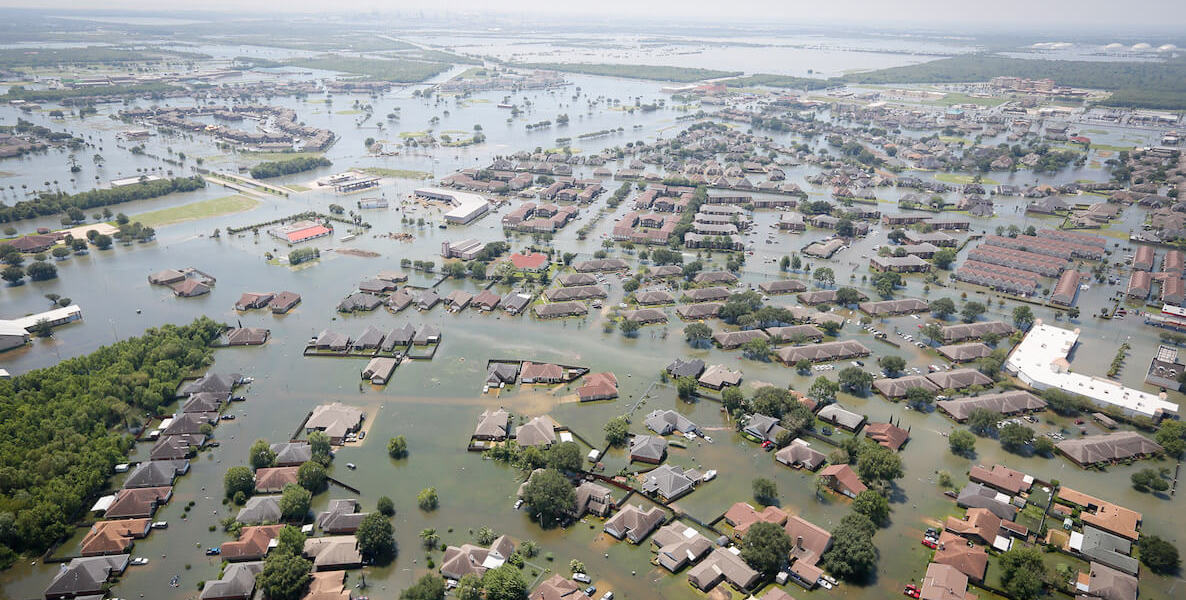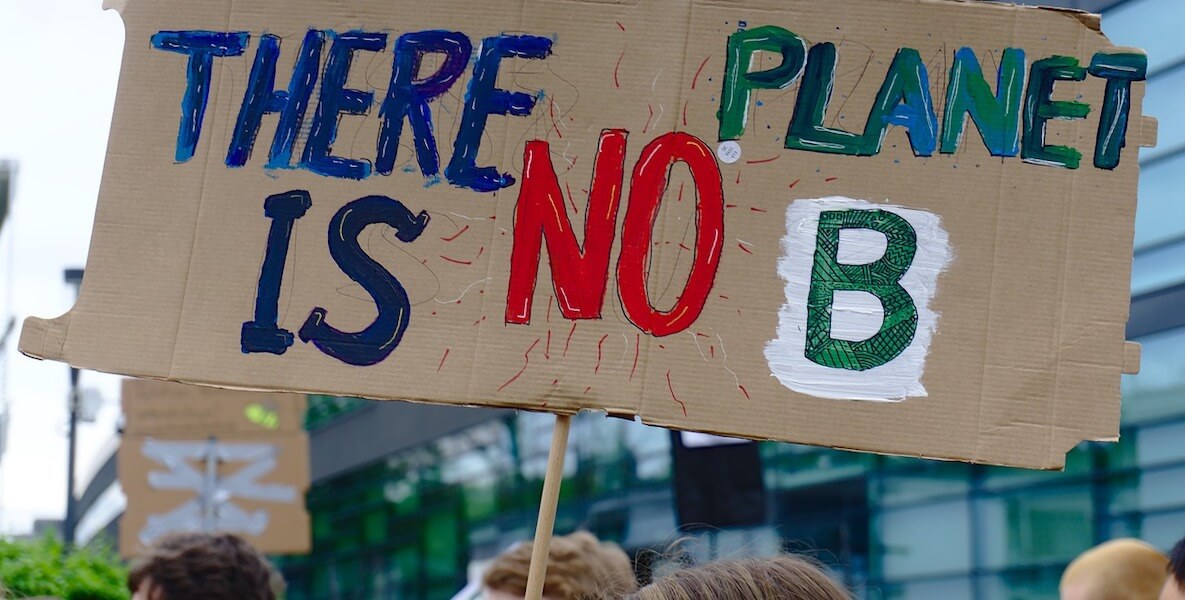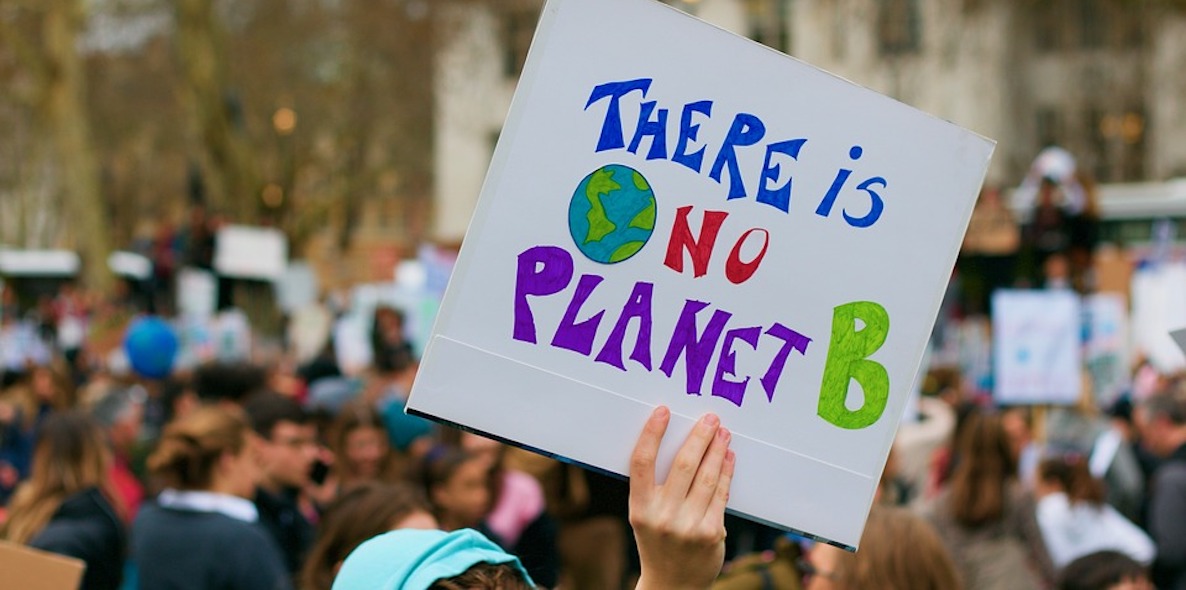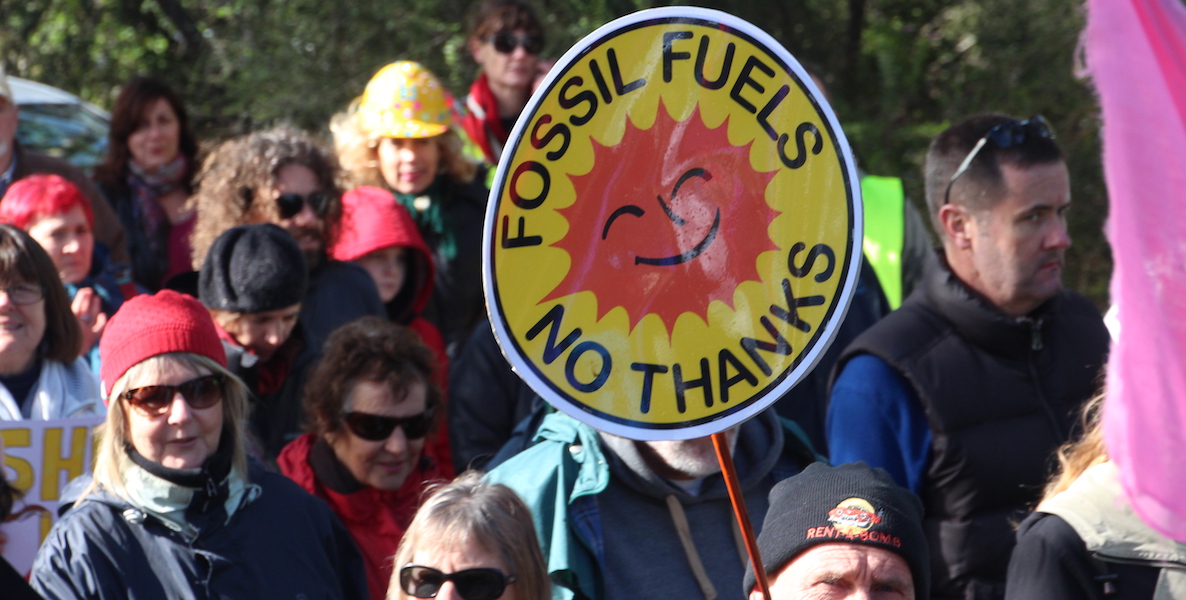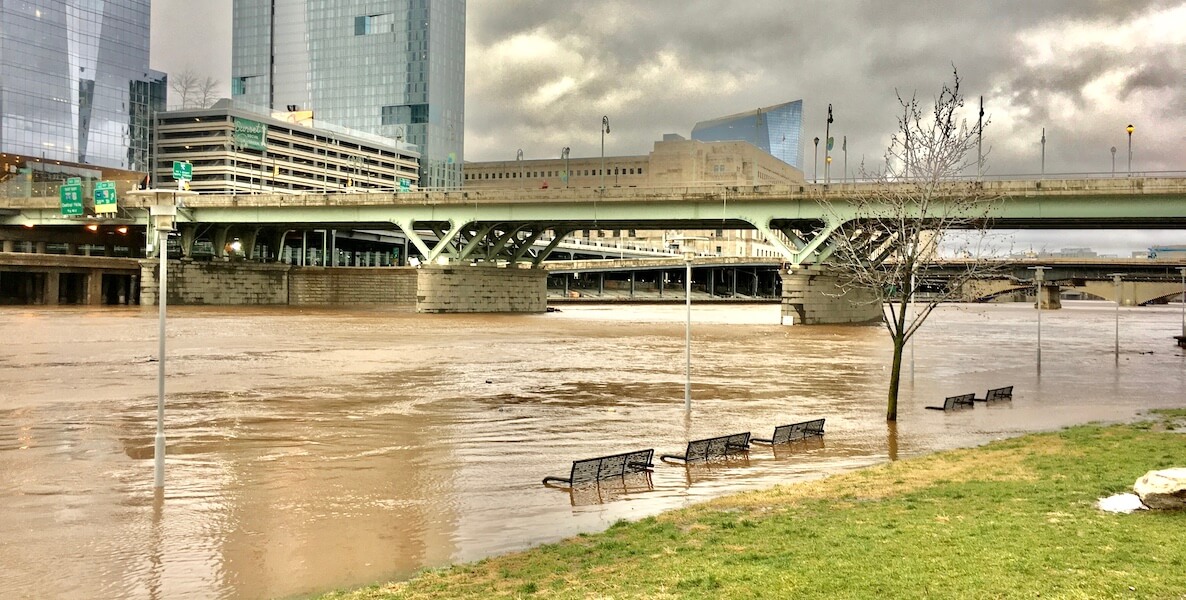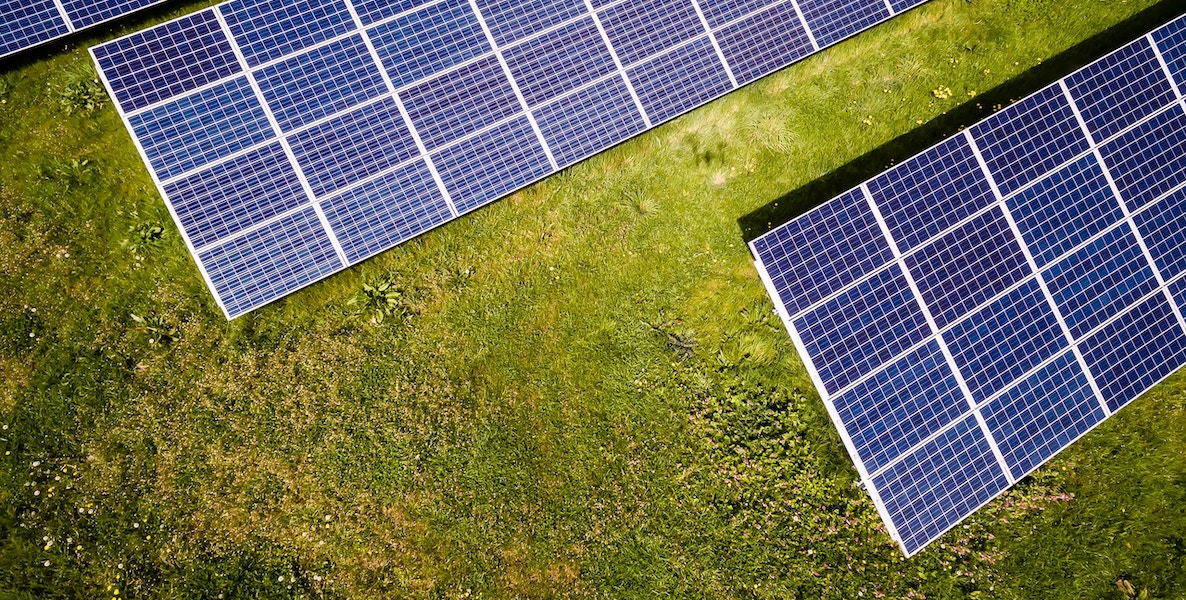This time next year representatives from across the globe will be returning from the 2021 United Nations Climate Change Conference, known as COP26, postponed by a full year due to the Covid-19 pandemic.
![]() COP26 should be an ambitious time for the United States to announce new commitments toward avoiding the worst effects of climate change. Luckily, by COP26, the United States will have reentered the Paris Climate Agreement in conjunction with President-elect Joe Biden’s goal of net zero carbon emissions by 2050.
COP26 should be an ambitious time for the United States to announce new commitments toward avoiding the worst effects of climate change. Luckily, by COP26, the United States will have reentered the Paris Climate Agreement in conjunction with President-elect Joe Biden’s goal of net zero carbon emissions by 2050.
While Mayor Jim Kenney joined 60 other local leaders to commit to the goals of the Paris Accord when the Trump administration announced its planned withdrawal from the international agreement in 2017, it is heartening to see that as a nation we will recommit to this global effort to avoid warming beyond 2 degrees Celsius above pre-industrial levels.
If we have learned anything from the past four years, it is that there is an urgent need for climate leadership at the local, regional, state, federal and international levels. Addressing the climate and equity challenges that cities like Philadelphia face requires coordinated action.
Since the most vulnerable citizens will be impacted the most by climate change, we applaud the City’s growing commitment to reducing greenhouse gas emissions and preparing for climate chaos using an equity lens.
In summer 2020, in the middle of a pandemic, Philadelphia braced for extreme heat and rain and attempted to provide cool and safe spaces for residents to socially distance, through the Office of Sustainability, which works to protect public health and improve resilience to extreme weather.
Philly has recently hired a Chief Resilience Officer and is working on an Environmental Justice report centering their mitigation and adaptation work around equity, racial, and social justice.
The climate change reality is that heat and flooding is threatening our health and well-being, particularly in elderly, low-wealth communities and among people of color.
It has continued to support solar growth through Solarize Philly, enrolling 6,234 households so far in this program that reduces the costs of installing a residential solar array. We know that there are still inequities in the adoption of this program and we need to work to make it financially accessible to people of all incomes.
That will mean a stronger funding commitment. Solarize Philly brings other benefits to communities and to the environment such as reduction in electricity costs and reinvestment in formerly redlined neighborhoods.
![]() The City has also moved forward with efforts to analyze opportunities for Philadelphia Gas Works to thrive in a low or no carbon economy. The closure of the Philadelphia Energy Solutions refinery represents another huge step into the green economy for Philadelphia, but it will require an ongoing and coordinated commitment to reimagining the City’s economic future and investment in green alternatives.
The City has also moved forward with efforts to analyze opportunities for Philadelphia Gas Works to thrive in a low or no carbon economy. The closure of the Philadelphia Energy Solutions refinery represents another huge step into the green economy for Philadelphia, but it will require an ongoing and coordinated commitment to reimagining the City’s economic future and investment in green alternatives.
Philadelphia is innovating locally to avoid the worst effects of climate change, but the City needs federal and state support.
Under the Biden administration, we will begin the lengthy process of repairing and replacing the greenhouse gas pollution standards that have been weakened by the reckless Trump administration.
The State of Pennsylvania is also receiving comment on its proposal to join the Regional Greenhouse Gas Initiative (RGGI), which would be a landmark step for the state, resulting in new funds generated from carbon pricing that could be used for environmentally conscious projects in Philadelphia.
In Philadelphia, summer 2020 was behind only 1995 and 2000 as the hottest summer recorded in the last 150 years. Philadelphia also broke three daily precipitation records this summer, including devastating flooding during Hurricane Isaias.
At the federal level, the most immediate need is to reinstate the original 2016 New Source Performance Standards (NSPS) for new oil and gas facilities. The 2016 NSPS was intended to cut climate-changing methane emissions 40 to 45 percent by 2025 from 2012 levels, but in August 2020, the Trump administration finalized the complete removal of the potent greenhouse gas methane from this necessary climate standard.
Methane pollution from oil and gas facilities is responsible for a full 25 percent of the climate change effects we currently experience. The failure to regulate it impedes our ability to reduce climate impacts that threaten Philadelphia’s livability.
In Philadelphia, summer 2020 was behind only 1995 and 2000 as the hottest summer recorded in the last 150 years. Globally, the National Oceanic and Atmospheric Administration just concluded that 2020 was just two-hundredths of a degree behind 2016, the hottest year ever recorded.
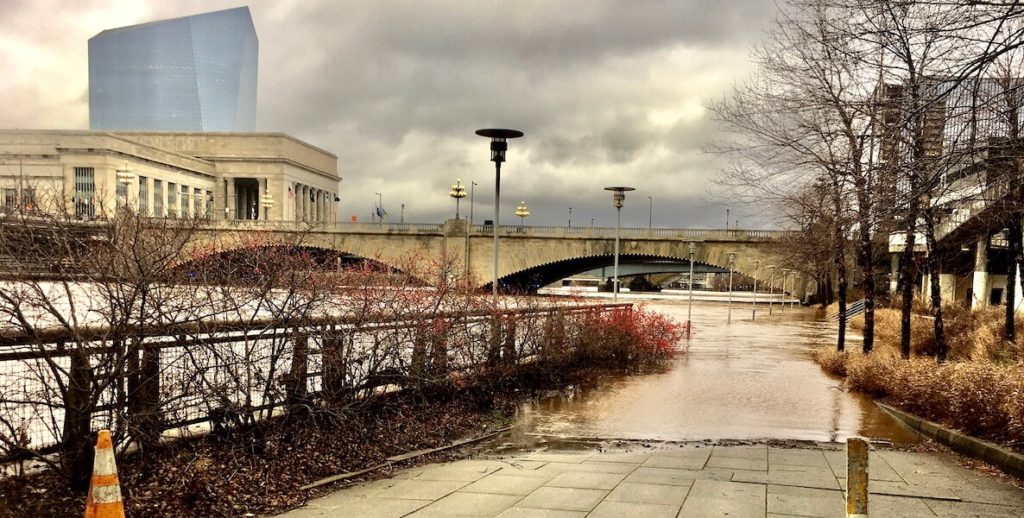
Philadelphia also broke three daily precipitation records this summer, including devastating flooding during Hurricane Isaias. The Eastwick Neighborhood experienced flash flooding as Darby Creek overflowed and streets became a toxic river of rain, sewage, and previously-contaminated soil.
The climate change reality is that heat and flooding is threatening our health and well-being, particularly in elderly, low-wealth communities and among people of color. Just as we would urgently prepare for a coming individual hurricane, we need to urgently prepare for cumulative, long-term extreme weather in the city.
![]() Along with Solarize Philly, the energy benchmarking program, the Green City, Clean Waters program, and the Office of Sustainability’s Beat the Heat program, Pennsylvania’s first example of Commercial Property-Assessed Clean Energy (C-PACE) financing is the latest project to reduce the causes and effects of climate change in Philadelphia.
Along with Solarize Philly, the energy benchmarking program, the Green City, Clean Waters program, and the Office of Sustainability’s Beat the Heat program, Pennsylvania’s first example of Commercial Property-Assessed Clean Energy (C-PACE) financing is the latest project to reduce the causes and effects of climate change in Philadelphia.
C-PACE financing led to a $1,500,000 loan toward efficiency measures at a new mixed-use development in the City, allowing 30,000 square feet of commercial space to reduce operating costs, reducing the entire building’s carbon footprint by 2,700 metric tons of carbon dioxide equivalents.
C-PACE financing illustrates the complicated relationships among levels of government. Before being used in Philadelphia, C-PACE funding had to be approved by the Pennsylvania state legislature in 2018. Similarly, the state legislature is now considering legislation that would allow community solar, giving all Pennsylvanians the ability to invest and benefit from a commercial solar array, without actually having to install and maintain residential solar panels.
Community solar would be particularly valuable to Philadelphians that may not own their homes or for those with roofs that are incompatible with solar panels.
The City also relied on the state to pass legislation allowing Philadelphia to update building codes beyond the statewide standards to promote energy efficiency and climate resiliency. It is through recognizing the needs of uniquely vulnerable Philadelphia residents that we can begin to craft policies to promote resiliency and address racial injustice and economic inequities.
We look forward to a 2021 where governments commit to climate action as an urgent challenge and an exciting opportunity to rebuild and reimagine. Change will come about through coordinated response by sympathetic administrations committed to reducing greenhouse gas pollution. In Philly, we are a willing partner. We welcome a return to federal environmental leadership and action. There’s no time to waste.
Here’s to 2021!
Christina D. Rosan is an associate professor of Geography and Urban Studies at Temple University. Russell Zerbo is an advocate at the Clean Air Council.
Header photo by Katherine Rapin


